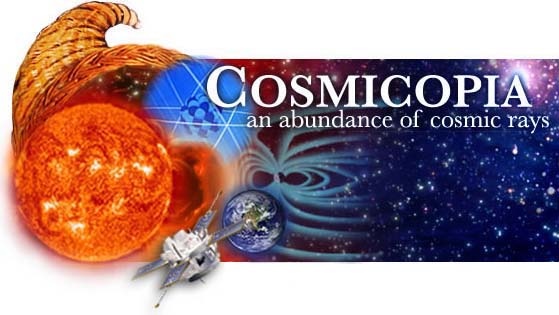
Nucleosynthesis
Nucleosynthesis requires a high-speed collision, which can only be achieved with very high temperature. The minimum temperature required for the fusion of hydrogen is 5 million degrees. Elements with more protons in their nuclei require still higher temperatures. For instance, fusing carbon requires a temperature of about one billion degrees! Most of the heavy elements, from oxygen up through iron, are thought to be produced in stars that contain at least ten times as much matter as our Sun.
Our Sun is currently burning, or fusing, hydrogen to helium. This is the process that occurs during most of a star's lifetime. After the hydrogen in the star's core is exhausted, the star can burn helium to form progressively heavier elements, carbon and oxygen and so on, until iron and nickel are formed. Up to this point the process releases energy. The formation of elements heavier than iron and nickel requires the input of energy. Supernova explosions result when the cores of massive stars have exhausted their fuel supplies and burned everything into iron and nickel. The nuclei with mass heavier than nickel are thought to be formed during these explosions.
 Nucleosynthesis in the News:
Nucleosynthesis in the News:
May 8, 2012: New
insight into atomic nuclei may explain how supernovas formed elements
crucial to humankind -- Science DailyMay 3, 2012: Star arsenic, star selenium -- Astrobiology
March 29, 2012: Cassiopeia A: A star explodes and turns inside out -- Chandra X-ray Observatory
February 25, 2012: Tellurium in ancient stars -- Astrobiology
December 16, 2011: Revealing how the elements were forged -- Astrobiology
November 19, 2011: Galaxies are the ultimate recyclers -- Astrobiology
October 6, 2011: M82: Starburst galaxy with a superwind -- APOD
October 5, 2011: Most ancient supernovas are discovered -- Tel Aviv University
September 12, 2011: Cosmic crashes forge gold -- Astrobiology
September 11, 2011: On the origin of gold -- APOD
September 1, 2011: M27: Not a comet -- APOD
August 30, 2011: The coldest brown dwarf -- APOD
August 26, 2011: Gas clouds may have created biggest cosmic explosions -- New Scientist
August 25, 2011: Berkeley scientists discover an "instant cosmic classic" supernova -- Berkeley Lab
July 9, 2011: Cosmic dust factories -- Astrobiology
June 6, 2011: Weizmann Institute observatory captures images of a new supernova -- Weizmann Institute of Science
May 10, 2011: How the Hoyle state made life possible -- Astrobiology
March 5, 2011: Cooling neutron star -- APOD
October 11, 2010: Giant star goes supernova -- and is smothered by its own dust -- Ohio State University
September 10, 2010: Supernova shrapnel found in meteorite -- Astronomy
August 26, 2010: M27: Not a comet -- APOD
May 24, 2010: Aluminum sure can -- HEAPOW
May 19, 2010: Astrophysicists uncover demise of a star under surprising circumstances -- Astronomy
May 19, 2010: Possible new class of supernovae puts calcium in your bones -- Eurekalert
May 6, 2010: Northern and Southern Owls -- APOD
April 30, 2010: Supernova's beginning blast shown in 3-D -- A first -- National Geographic
April 14, 2010: Pinning down a proton -- North Carolina State University
April 12, 2010: Dust and the wind -- HEAPOW
March 22, 2010: About to go boom -- HEAPOW
March 16, 2010: Simulations solve a 20-year-old riddle about why nebulae around massive stars don't disappear -- Eurekalert
January 28, 2010: Fusion power a step closer after giant laser blast -- National Geographic
January 28, 2010: Planetary physics shrunk into a lab as MIT pursues fusion -- Physics World
January 27, 2010: Renowned UC San Diego astrophysicist and astronomer dies at 84 -- Astronomy.com
December 23, 2009: Vampires and collisions rejuvenate stars -- Hubble Space Telescope
December 8, 2009: Suzaku spies treasure trove of intergalactic metal -- NASA's Imagine the Universe!
December 2, 2009: Suzaku spies treasure trove of intergalactic metal -- NASA
November 5, 2009: Rapid supernova could be new class of exploding star -- Astronomy.com
November 4, 2009: Blue Sun bristling -- APOD
November 4, 2009: Carbon atmosphere discovered on neutron star -- Astronomy.com
September 23, 2009: Computer code gives astrophysicists first full simulation of star's final hours -- Science Daily
September 21, 2009: Cavities with iron fillings -- HEAPOW
September 14, 2009: Heavyweight -- HEAPOW
August 21, 2009: An old star provides new light on universe formation -- Astronomy.com
August 20, 2009: The origin of solar systems -- Astrobiology
August 17, 2009: Cosmic alchemy in the laboratory -- Physics
July 26, 2009: From a star's death, our birth -- Astrobiology
July 22, 2009: Integral disproves dark matter origin for mystery radiation -- ESA
July 18, 2009: Supernova may be in a new class -- Science News
July 10, 2009: The pillars of Eagle Castle -- APOD
July 6, 2009: University of Toronto astronomer part of team that finds new way to study supernovae -- University of Toronto
June 8, 2009: Enrichment -- HEAPOW
May 28, 2009: Great moments in GRIStory -- NASA
April 20, 2009: Neutron-rich and doubly magic: Nucleus is a first -- Physics World
March 19, 2009: The origin of supernovae confirmed -- Eurekalert
March 17, 2009: Tycho's supernova remnant -- APOD
March 13, 2009: Stardust sheds new light on origin of elements of life -- Astronomy.com
February 5, 2009: Cosmic dust fountain spotted -- Astronomy.com
January 22, 2009: Planetary nebula NGC 2818 -- APOD
January 16, 2009: Team detects dust around a primitive star -- Astronomy.com
January 6, 2009: Cassiopeia A comes alive across time and space -- NASA's Chandra mission
December 29, 2008: NGC 1569: Starburst in a dwarf irregular galaxy -- APOD
December 24, 2008: Researcher nabs doubly magic tin isotope, a North American first -- Science Daily
December 18, 2008: La Superba -- APOD
December 3, 2008: 'Echoes' shine a light on Tycho Brahe's supernova -- Physics World
October 2, 2008: 'Little bang' triggered solar system formation -- Carnegie Institution for Science
August 29, 2008: Generations of stars in W5 -- APOD
July 4, 2008: SN 1006 supernova remnant -- APOD
June 10, 2008: Detective astronomers unearth hidden celestial gem -- ESA
May 29, 2008: Scientists heat matter to hotter than surface of the sun -- Telegraph
May 21, 2008: NASA's Swift satellite catches first supernova in the act of exploding -- NASA GSFC
May 18, 2008: On the origin of gold -- APOD
April 30, 2008: Stellar ticking time bomb explodes on cue -- NASA GSFC
April 14, 2008: A new nova in Cygnus -- Astronomy.com
April 7, 2008: Hot, bright, massive stars have complex mixing processes in their great depths -- Science Daily
March 27, 2008: The N44 complex -- APOD
March 20, 2008: Heavyweight contender -- Physical Review Focus
February 29, 2008: Earth is doomed (in 5 billion years) -- Physics World
February 17, 2008: M1: The Crab Nebula from Hubble -- APOD
January 8, 2008: Hubble finds that "blue blobs" in space are orphaned clusters of stars -- HubbleSite
December 20, 2007: Dust in the wind -- Astronomy.com
November 21, 2007: Astronomers discover stars with carbon atmospheres -- University of Arizona
November 18, 2007: Scientist seeks to understand nuclear reactions on stars deep underground -- Black Hills Pioneer
November 15, 2007: Brightest supernova may reignite -- Scientific American
October 24, 2007: Massive star's afterlife: A supernova seeds new planets -- Science Daily
September 25, 2004: The iron Sun -- NASA GSFC APOD
August 18, 2003: New metal-poor galaxies: the youngest in the universe? -- Sloan Digital Sky Survey
August 6, 2003: Source for major type of supernova explosions found -- Spaceflight Now
April 3, 2003: How the Sun shines -- Space.com
March 19, 2003: How does the Sun shine? -- Physics News Update
March 6, 2003: Scientists pinpoint stellar production of helium, yielding new insights into the young universe -- EurekAlert
October 31, 2002: Old star sheds light on creation of elements -- PhysicsWeb
October 31, 2002: Struck by low-metal star finding -- Space News
October 23, 2002: Gamma-ray telescope to sleuth for origin of elements -- NASA GSFC
July 29, 2002: Dwarf's gift -- HEASARC Picture of the Week
July 19, 2002: A solar source for diamond dust? -- Sky & Telescope
July 17, 2002: The Sun: A great ball of iron? -- ScienceDaily
January 13, 2002: Radioactive decay of elements gives age of stars -- Spaceflight Now
January 8, 2002: Sun is mostly iron, not hydrogen -- University of Missouri-Rolla
December 1, 2001: Nuclei prompt stellar rethink -- PhysicsWeb
October 26, 2001: Elements in the aftermath -- NASA GSFC APOD
August 22, 2001: Heavy metal stars -- ESO
August 20, 2001: Astrophysicists receive $2 million from Department of Energy to explore supernovae -- LLNL
July 23, 2001: Mining aluminum in the Universe -- NASA GSFC HEAPOW
July 19, 2001: Iron from meteorites helps probe early solar nebula -- UniSci
June 30, 2001: Hydrogen, helium, and the stars of M10 -- NASA GSFC APOD
June 5, 2001: Reconsidering interstellar dust and heavy elements -- UniSci
May 21, 2001: The universal distribution center -- NASA GSFC HEAPOW
April 5, 2001: On the origin of gold -- NASA GSFC APOD
January 9, 2001: Unusual mixing in red giants identified as unexpected contributor to mysterious source of lithium -- NOAO
January 9, 2001: Evidence presented for new supernova explosion model -- Spaceflight Now
January 8, 2001: Rare spherical planetary nebula provides step toward accurate measurement of chemical compositions in stars -- NOAO
November 27, 2000: Revealing colorful element formations in ancient stars -- Spaceflight Now
March 12, 1999: Hydrogen, helium, and the stars of M10 -- APOD
November 9, 1998: WR124: Stellar Fireball (read about Wolf-Rayet stars) -- APOD
July 2, 1998: CRIS data indicate a long delay between nucleosynthesis and cosmic ray acceleration -- ACE News
Nucleosynthesis Activities
Grades 9 - 12: Cosmology and Stellar Evolution -- NASA GSFCGrades 9 - 12: Life Cycle of Stars -- CERES Project
Grades 9 - 12: The Sun or the Supernova? -- NASA GSFC
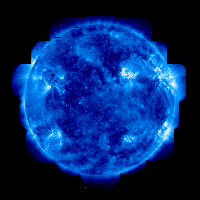

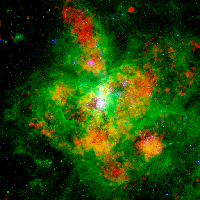
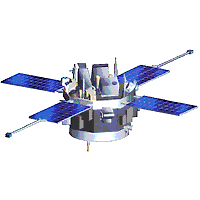
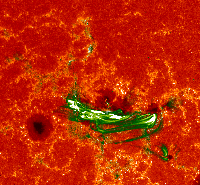
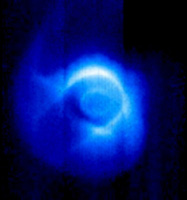
Questions and comments to: cosmicopia@cosmicra.gsfc.nasa.gov
Curator: Dr Eric R. Christian, NASA
Responsible NASA Official: Dr Eric R. Christian
Privacy Policy and Important Notices

HOME
In the News
History
Ask Us
Great Links
Glossary
Site Map
Search NASA
